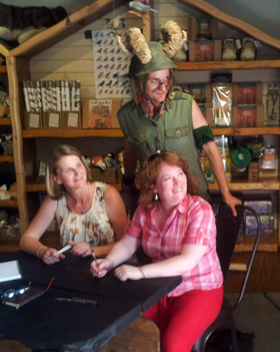 Lyn Stone has worked in a variety of jobs, including a Curator at the Tower of London. Being rather small she was the only member of staff who could climb into the display cabinets to clean Henry VIII’s Codpiece, whilst Japanese tourists happily took photographs! She can also boast accidentally shocking an Amerian tourist who mistook two flintlock dueling pistols for gun with real amo! She has also worked as a freelance model-maker for television, working on a variety of shows, for the BBC and ITV. As a model-maker she found herself working with puppets, actors as well TV crew. On one memorable occasion Lyn made a model so big, it had to be built in her garage. Much to the amusement of all her neighbours when a large lorry, bearing the slogan ‘British Broadcasting Corporation’ turned up to collect it and struggled up a very narrow lane!
Lyn Stone has worked in a variety of jobs, including a Curator at the Tower of London. Being rather small she was the only member of staff who could climb into the display cabinets to clean Henry VIII’s Codpiece, whilst Japanese tourists happily took photographs! She can also boast accidentally shocking an Amerian tourist who mistook two flintlock dueling pistols for gun with real amo! She has also worked as a freelance model-maker for television, working on a variety of shows, for the BBC and ITV. As a model-maker she found herself working with puppets, actors as well TV crew. On one memorable occasion Lyn made a model so big, it had to be built in her garage. Much to the amusement of all her neighbours when a large lorry, bearing the slogan ‘British Broadcasting Corporation’ turned up to collect it and struggled up a very narrow lane!
Her main line of work, however, has been that of an artist and illustrator. Her amusing drawings have enlivened the pages of many children’s books, from history books to children’s play scripts, and pop-up books. Some of her regular clients have included Oxford University Press, Templar Publishing and Armadillo Childrens books.
She has lived all her life in south-east London, and when not at her lightbox she enjoys forays from the suburbs to the bright lights, theatres and cinemas of the West End. However soon she’ll be packing her bags and moving to the seaside in Kent, and is hoping that the Kent countryside and beaches will inspire her work!
Here is Lyn showing and discussing her process:
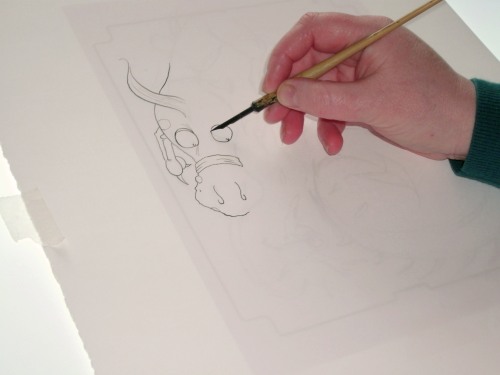
Step 1 – I place the sketch or enlarged thumbnail onto a lightbox. The watercolour paper is placed on top and using an acrylic-based ink I begin inking the drawing, without following the sketch too carefully.
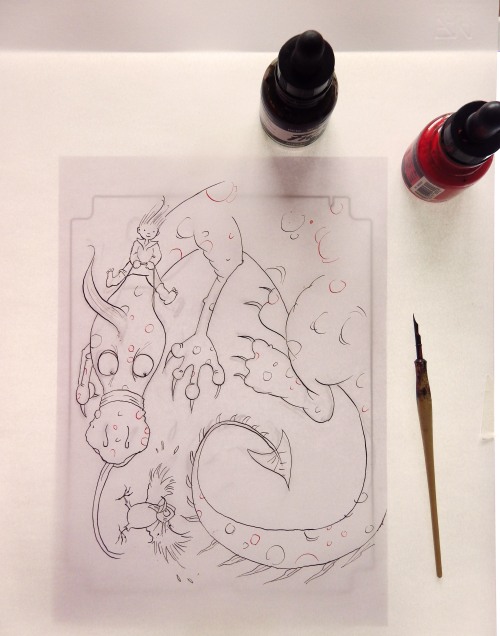
Step 2 – Here is the finished inked artwork. I then stretch the paper using traditional methods.
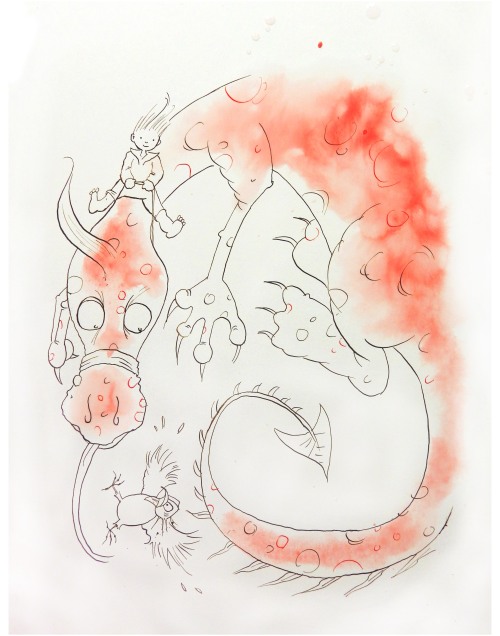
Step 3 – Once dry. I flood the paper with clear water and begin adding the first colour, which spreads and pools in the water in nice unpredictable ways. Start building the colours up a little. Again I am using the wet-in-wet technique.
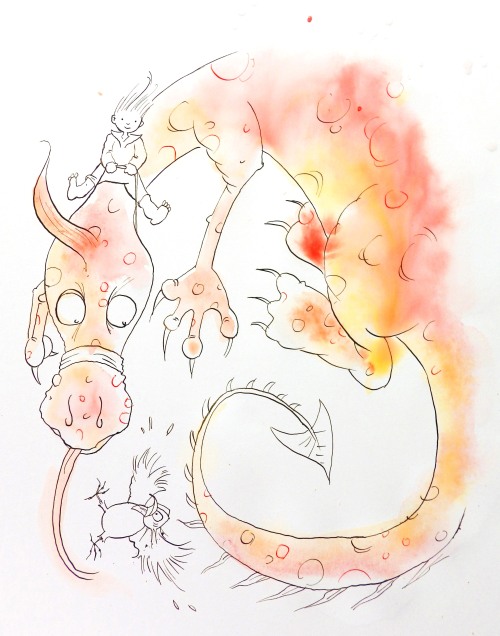
Step 4 – While everything is still very wet, I like to ‘push’ the colours around a little so they merge.
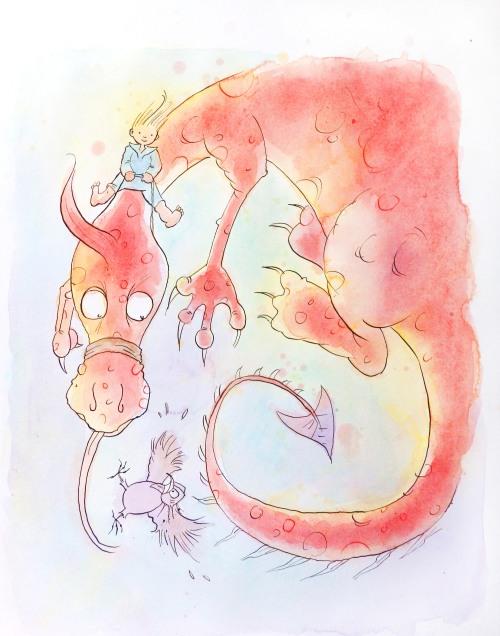
Step 5 – Now I begin adding colours in a more controlled way with the paper dry but mixing the watercolour over the paper by adding clear water to it.
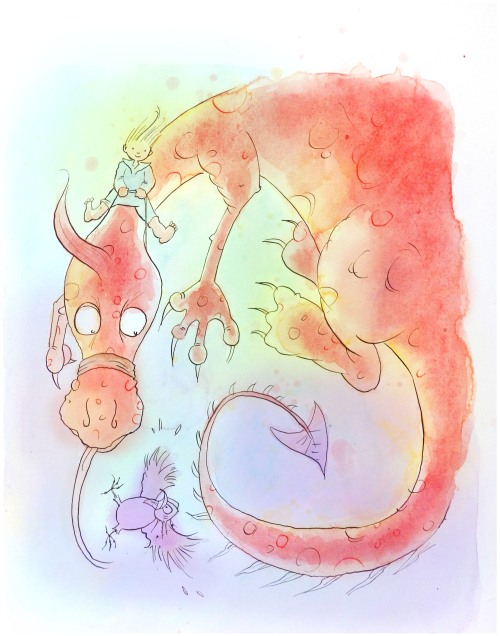
Step 6 – With this particular picture I added the background colours at a later stage.
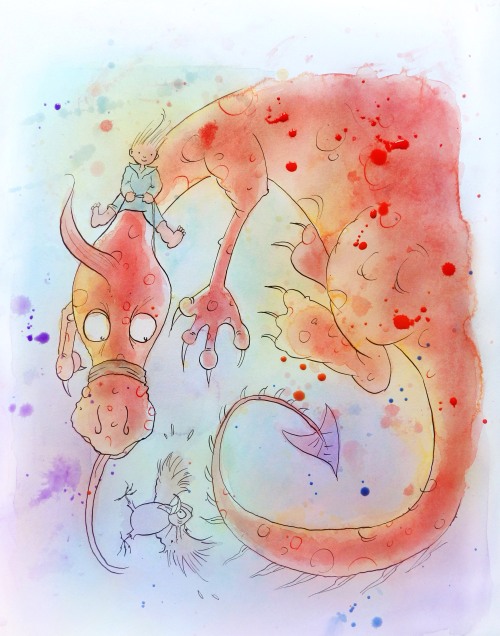
Step 7 – Now I can start adding some texture and pattern by flicking the paintbrush, loaded with paint across the picture – this is great fun!
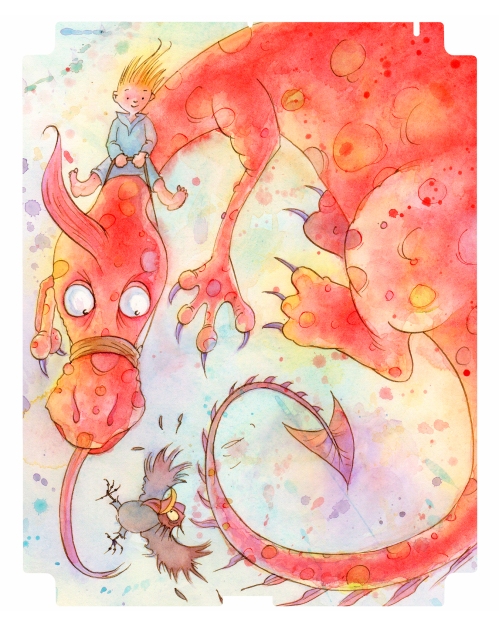
Step 8 – Once dry I then scan the artwork and this instance dropped it into a template for an iPAD skin using Photoshop.

How long have you been illustrating?
Over 20 years
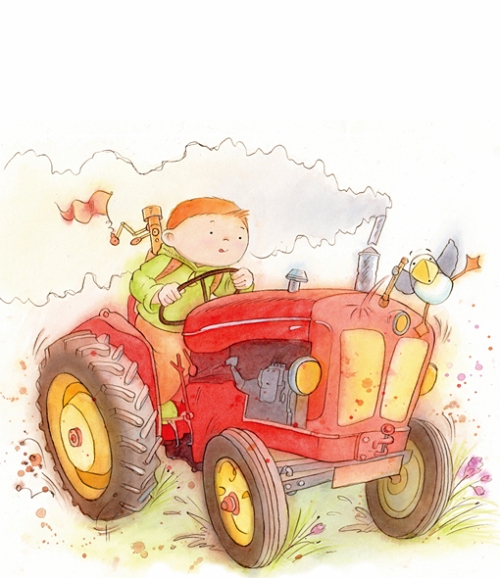
Did you go to college for art? If so, where I attended.
Southwark College off the Old Kent road in London, where I completed a B/Tec diploma. I then went onto to do a BA Hons at Middlesex University in 3D design. I originally worked in television and am self taught as an illustrator.
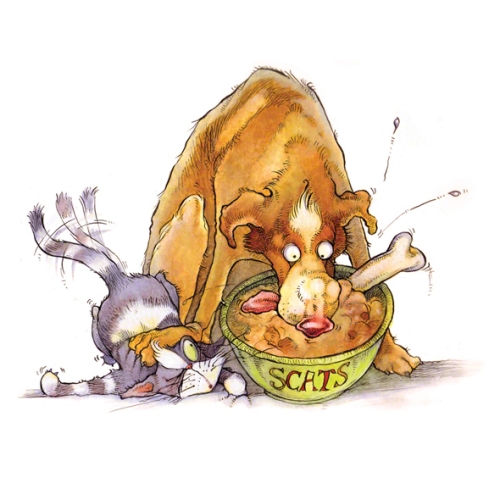
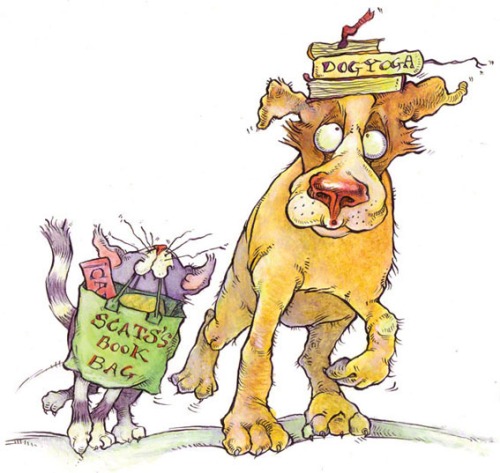 How did you decide to attend that school?
How did you decide to attend that school?
Well the first college had a really good reputation at the time and a very good tutor for drawing, even though we did call him Hitler, because he worked us so hard! My second choice probably wasn’t a good one, as I should have done an illustration course, maybe at Brighton, but I learned a range of skills from doing it.

Can you tell us a little bit about the school and the type of degree you received?
Well it was 3-dimensional work, so ceramics, jewellery making, glass blowing, silversmithing, furniture making, etc., we also studied the history of art.

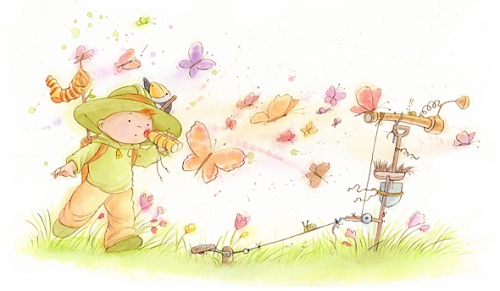 What were you favorite classes?
What were you favorite classes?
History of art and probably ceramics
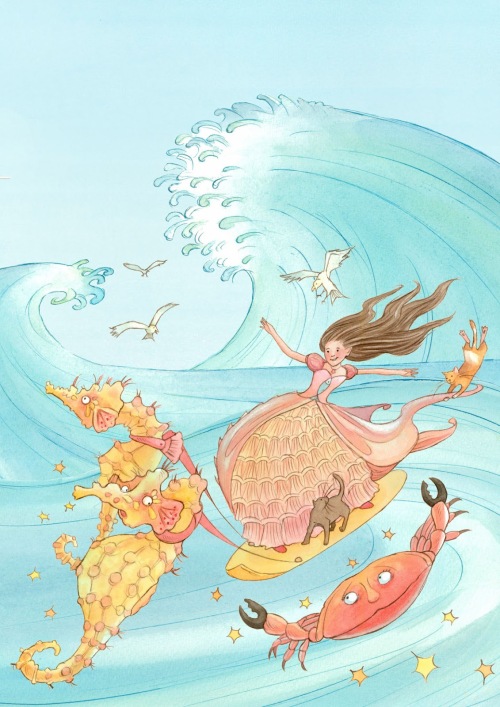
Did the School help you get work?
No. It’s the one bad thing they do not do. You never get to hear about what it’s really like out there in the real world. Universities could do with introducing a few lectures on this subject alone. I am very self-motivated. A year before I was due to graduate I approached the head of design at ITV television. He interviewed me with my portfolio and said to contact him when I graduated. I did and he gave me my first job!
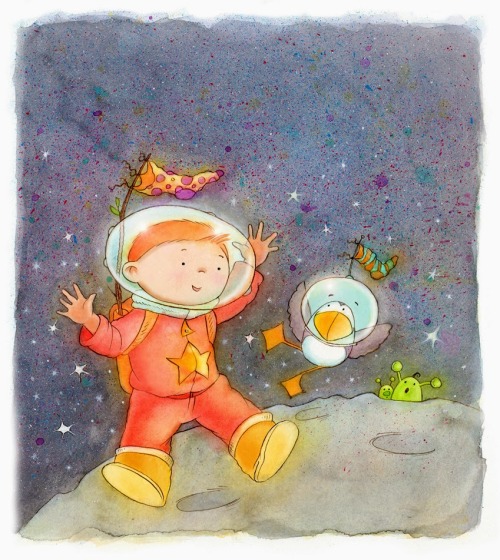
What type of work did you do right after you graduated?
I worked on many different British TV shows for both ITV and the BBC.

Do you feel that the classes you took in college have influenced your style?
No. I have been influenced by other artists and illustrators. I love the artists Turner and Kandinksy, the illustrators Peter Woodroft, Chris Riddell and my favourite by far is Heath Robinson!
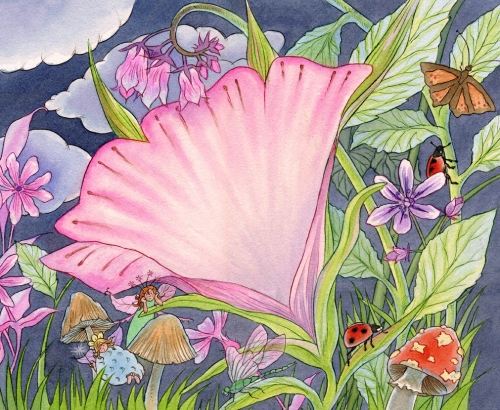
What was the first art related work that you did for money?
I guess for TV. I built a 25th scale model of The Bill set, and for 10 years it was on display in the MOMI, The Museum Of Moving Image in Central London.
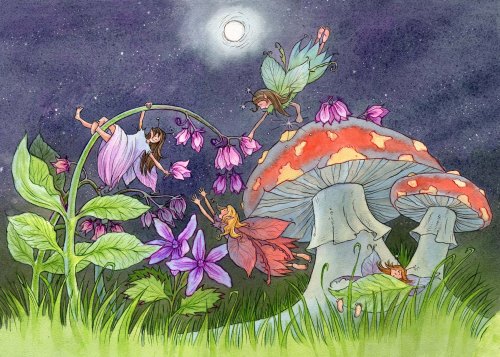
When did you decide you wanted to illustrate a children’s book?
I sort fell into it really. A friend of mine wrote travel books and wrote a children’s play that he wanted illustrated. I was known by that time as being very good at creating leaving cards for people, and he suggested I illustrate his book. The publisher then proceeded to use me for more projects, and it very gradually snowballed.

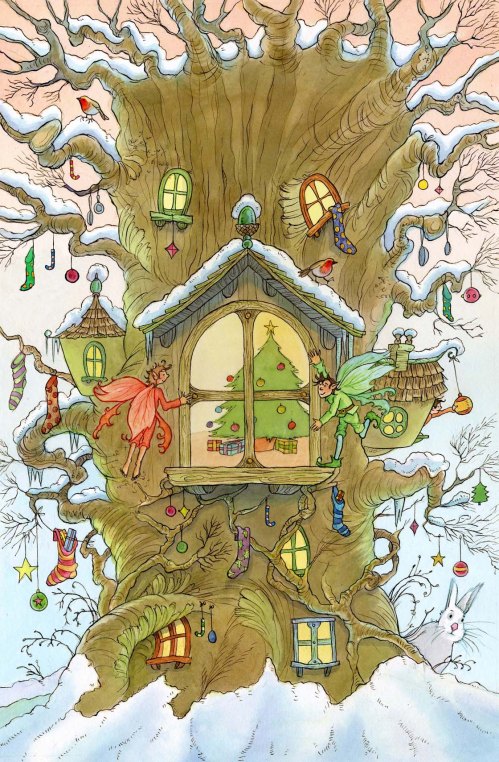
What was the first book you illustrated?
My friend’s play, entitled The Looking-glass Alchemist
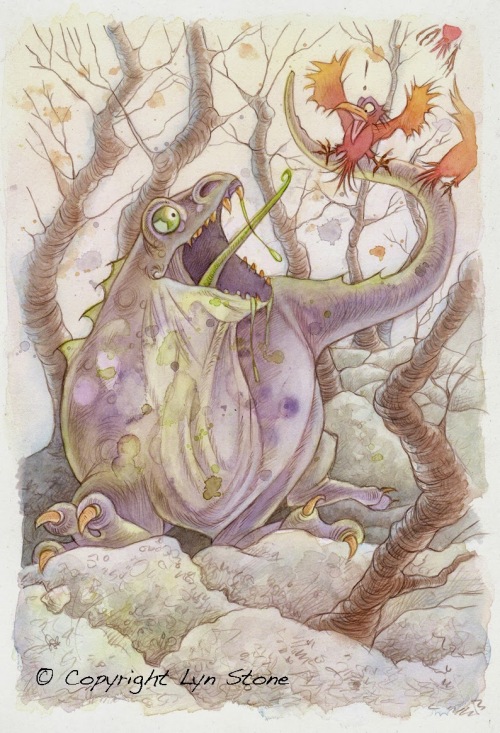
How did that contract come about?
My friend really put my name forward to the publisher. In those days you could get away with that, lol.

What do you consider is your first big success?
My first commission with Oxford University Press.

How did that opportunity come about?
I sent them samples of my work and they asked me to produce a single illustration. What I didn’t realise at the time was that I was competing with three other illustrators for the commission! I got it – hurrah! I had to do over 150 illustrations – a huge project.

How many picture books have you illustrated?
A true 25-page illustrated picture-book is something I am yet to be commissioned to do – come on publishers, give me that commission! However I have illustrated over 43 books!

I see you were a model-maker for television. What does a model maker do?
Well a range of interesting things. I used to make mini models of sets, so cameramen could work out where to film, models that were props on set, and models for exhibition purpose.
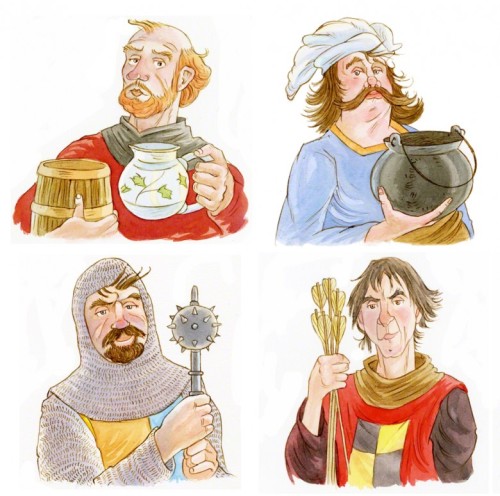
How did you get involved in creating pop-up books?
To some publishers my style seems to lend itself to the pop-up genre. The first one I did was a dummy book for the Bologna book fair for Templar Publishing.
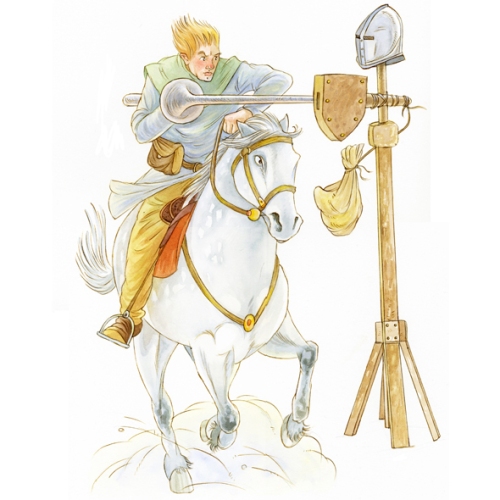
Do you work with the physical creation and working parts of the pop-up books?
A paper engineer will send me a mock up that actually works and the designer on paper will send me templates, so I know the space my artwork must fill.

What is the children’s publishing industry like in London?
Well the recent recession hit it a bit and it is picking up again, but you cannot get the same fees that were available ten years ago, but that is an international problem. I still love what I do very much, it is just a shame that the profession has been somehow diminished a little by the industry.

How did you find your agent and how long have you had them?
I have been with Peter now for four years, but tried two others before that. I simply emailed samples of my work and a little of my history and client list (very important if you want to be considered). They receive hundreds of requests weekly, and so I was very lucky.
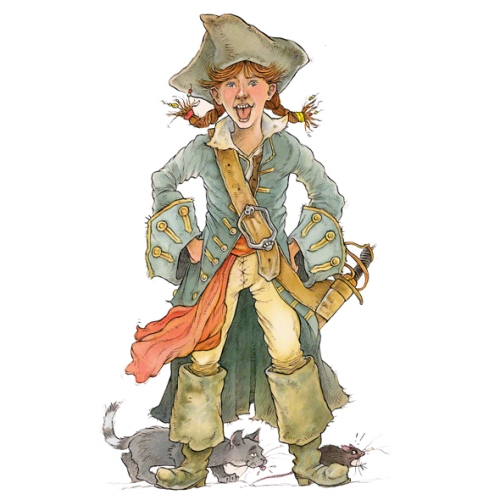
Do you always use watercolor to paint your color illustrations?
No, sometimes inks and I have experimented with mix media too!

What do you use to create your black and white drawings?
An old fashioned dip nib and an acrylic based sepia or black ink. Sometimes however they are created digitally, using illustrator. My greyscale illustrations are created using a propelling pencil with a nice soft led. They’re great because you never need to stop to sharpen them.

Have you done illustrations for any children’s magazines?
No, but I recently completed working on a two-year project for the Agatha Christie book collection. I illustrated all the villains! Great fun.
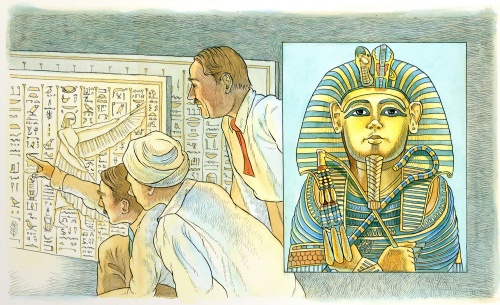
How did you get involved with painting for stage and theatre?
I have never worked in the theatre or on stage as a painter. Only television. However I have produced an illustration for a pantomime, Cinderella for a theatre in Scarborough. It was used on their posters and promotional material.
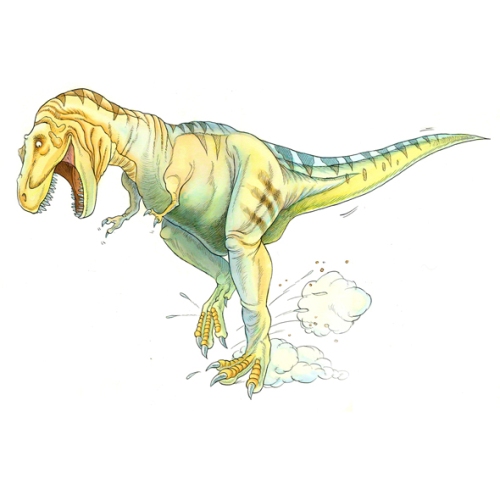
Have done any artwork for educational publishers?
Yes. Lots and lots.
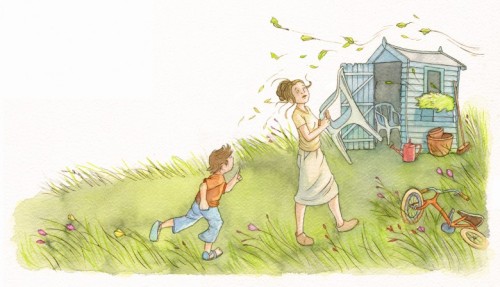
Do illustrators do school visits in the UK?
Yes, and museums and libraries. I have certainly run childrens workshops in both libraries and at a museum – the National Maritime Museum in Greenwich.

What types of things do you do to find illustration work?
I find the internet is becoming more and more important. I am on several websites, including the AOI, Association of Illustrators. I also blog regularly, tweet and have a Facebook page.

Do you ever exhibit your artwork?
Not yet, no. But what a good idea!

What is the one thing in your studio that you could not live without, other than your paints?
My light box!!!
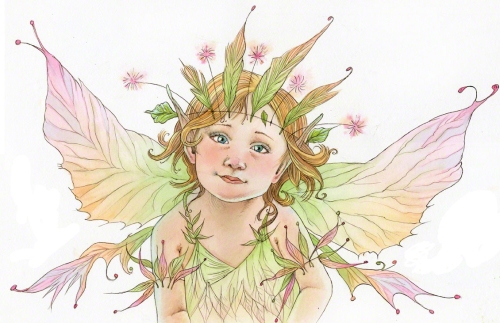
Do you try to spend a specific amount of time working on your craft?
It varies, if you have a tight deadline then a twelve hour day is quite normal!
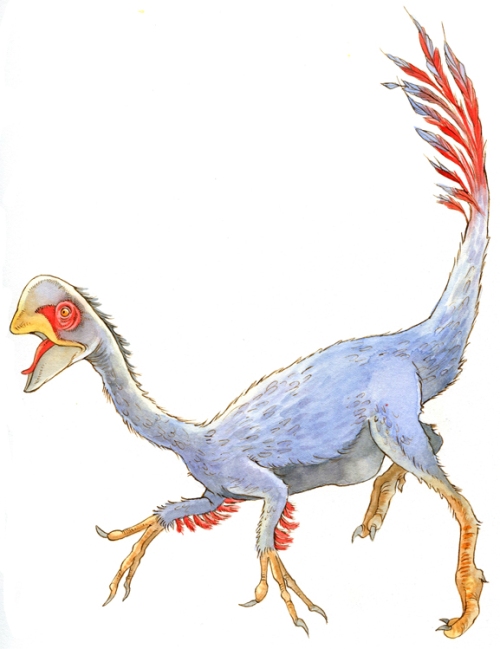
Do you have any desire to write and illustrated your own books?
Yes. I have just written three picture books, which are currently being looked at by Macmillan Books. Hopefully they will buy my project – fingers crossed.
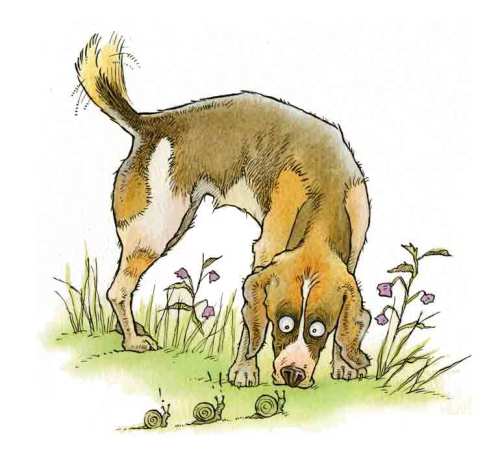
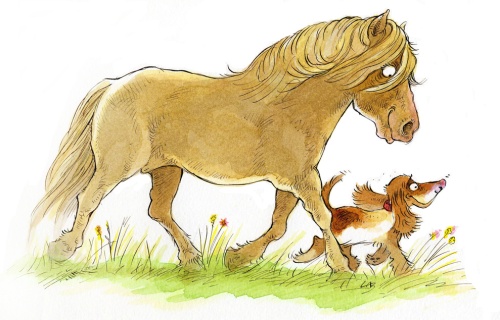
Do you take pictures or do any types of research before you start a project?
Often, yes. Especially for a reference book.

Do you think the Internet has opened doors for you?
Most definitely.
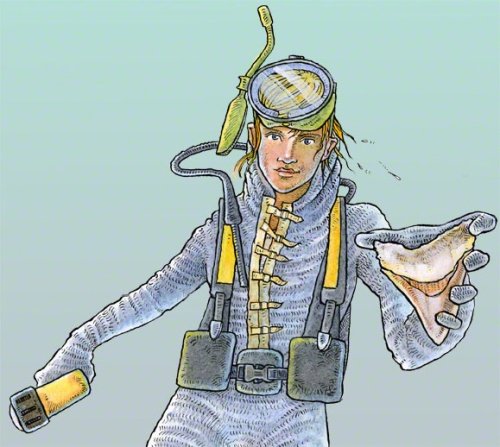
Do you use Photoshop or Corel Painter with your illustrations?
These days publishers very rarely want original artwork, and of course some of my clients are half way round the world. So I tend to scan my illustrations and digitally prepare them to upload to a client, using Photoshop.

Do you own or have you used a Graphic Drawing Tablet in your illustrating?
Yes own and used! I had to do a series of vector illustrations using illustrator. They were all silhouetted characters and animals.
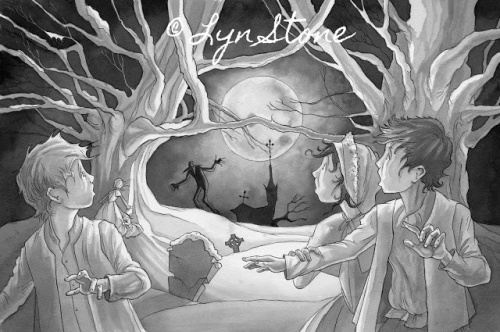
Do you have any career dreams that you want to fulfill?
Yes. To write and illustrate my own books. I have always enjoyed writing too.
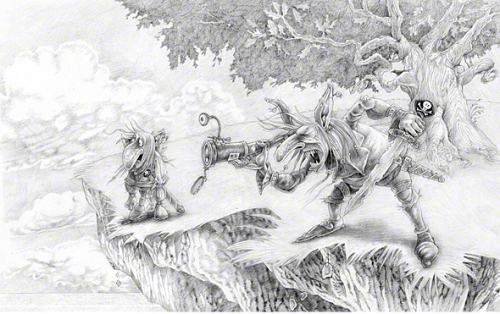
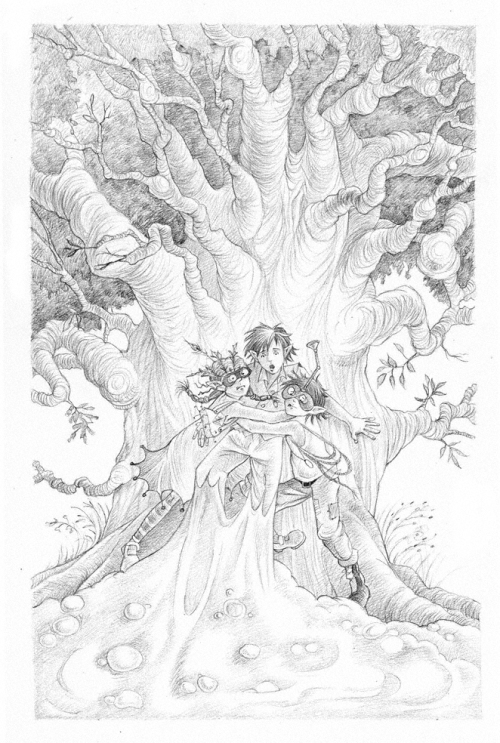
What are you working on now?
Have just completed working on peek-o-boo book. They are quite hard to work on, because you have to think in three dimensions all the time, and there are many layout restrictions. Each page of the book opens up into what I can only describe as a theatre set, and you can peek through to various layers, which together tell a story. Very complex work indeed.
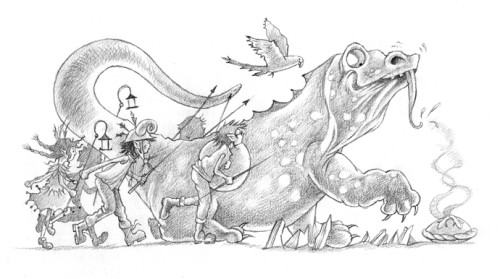
Do you have any material type tips you can share with us? Example: Paint or paper that you love – the best place to buy – a new product that you’ve tried – A how to tip, etc.
I particularly like using Fabriano heat sealed, hand made watercolour paper. It has no knot at all, and takes a bit of knocking about too. Very good quality paper indeed. All artists are different. I prefer to stretch my paper first, the old fashioned way. You can throw as much water and paint at it as you like and it always dry completely flat, which makes scanning less of a headache. My father taught me how to stretch paper as a child.
My favourite art shops are Corneillison & Sons, in Great Russell Street, London, and Chromos in Canterbury. Both hold extremely good stock.

Any words of wisdom on how to become a successful writer or illustrator?
You need a will of iron, determination, patience. Unless you are extremely lucky, it can take years to become truly established. Grow a thick skin too. Publishers can be quite harsh about your work when it gets to editing roughs stage. Join an illustration association, as they can provide you with advice on fees and legal advice. They can often provide standard contracts too that you can give to potential clients, and so well worth joining. Above enjoy what you do!
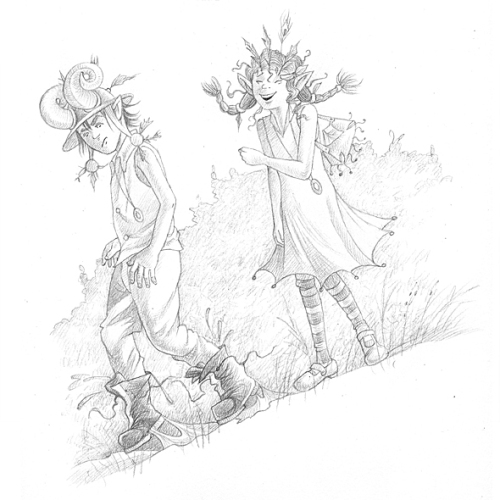
Lyn thank you for sharing your wonderful illustrations, process, journey, and expertise with us. Please keep in touch and let us know of all your future successes. We would love to hear about them.
You can visit Lyn at her website: http://www.lynstone.com or stop by the agency that represents her: The Illustrator Agency
Please take a minute and leave Lyn a comment. It is always appreciated. Thanks!
Talk tomorrow,
Kathy
Filed under:
How to,
illustrating,
Illustrator's Saturday,
inspiration,
Interview,
Process,
Tips Tagged:
Armadillo Childrens books.,
Lyn Stone,
Templar Publishing 


Shaun Tan,
The Bird King and Other Sketches
Templar Publishing (UK), 2011; first published by Windy Hollow Books (Australia), 2010.
Ages 9 +
Shaun Tan’s beautifully produced sketchbook, The Bird King, generously lays bare the creative process of illustration. While not specifically designed for children, Tan’s familiar images are of instant, near-universal appeal, and his explanatory text will be a revelation to young fans, especially aspiring artists.
Tan’s introduction references Klee’s famous description of drawing as “taking a line for a walk.” The colored and black-and-white drawings are divided into sections. Images in which “one little drawing is enough” to suggest a whole story comprise the untold stories section. In book, theatre and film, Tan describes his preliminary sketches as “a constant reminder of what I was ‘getting at’ in the first place” during longer creative processes. In drawings from life, we see “ongoing studies in the relationship of line, form, colour and light” that are crucial to an artist’s lifelong process of learning to see. A final section, notebooks, is culled from small ball point pen sketches, doodles and scribbles, some “an equivalent to daydreaming” that Tan poetically compares to fishing: “casting loose lines into a random sea… catching ideas that might otherwise be hidden beneath the waves.”
The drawings themselves also include little notes, ideas for development, and titles that further decipher the artist’s visual language. One double-page drawing entitled “Portrait of the Artist as a Young Man” features a dozen of Tan’s creatures marching behind a small boy, bird on his head, palette in hand. The only color on the page is a splash of orange dropping from his brush, repeated on the body of a goldfish, held aloft in a bowl, by a large creature with a diving bell head in which a bird in a beret stands at the wheel. In Tan’s quixotic imagination, the robotic and the humanizing hover in edgy balance.
The production quality of this small hardcover book is excellent. Partially bound in red cloth, with embossed lettering on the front cover, it’s held closed with a red elastic band; a blue ribbon bookmark is sewn into the binding. The back matter includes a list of the drawings in the book (noting materials used and the original purpose of each sketch) and a bibliography of Tan’s published works.
Young artists will learn more from studying the lines Tan takes for a walk than from any number of art classes. Children who already know and love books by the 2011 Astrid Lindgren Memorial Award winner will recognize preliminary sketches of work from favorite books. For newcomers, The Bird King is a great introduction to this evocative Australian writer-illustrator.
Charlotte Richardson
February 2012



 Lyn Stone has worked in a variety of jobs, including a Curator at the Tower of London. Being rather small she was the only member of staff who could climb into the display cabinets to clean Henry VIII’s Codpiece, whilst Japanese tourists happily took photographs! She can also boast accidentally shocking an Amerian tourist who mistook two flintlock dueling pistols for gun with real amo! She has also worked as a freelance model-maker for television, working on a variety of shows, for the BBC and ITV. As a model-maker she found herself working with puppets, actors as well TV crew. On one memorable occasion Lyn made a model so big, it had to be built in her garage. Much to the amusement of all her neighbours when a large lorry, bearing the slogan ‘British Broadcasting Corporation’ turned up to collect it and struggled up a very narrow lane!
Lyn Stone has worked in a variety of jobs, including a Curator at the Tower of London. Being rather small she was the only member of staff who could climb into the display cabinets to clean Henry VIII’s Codpiece, whilst Japanese tourists happily took photographs! She can also boast accidentally shocking an Amerian tourist who mistook two flintlock dueling pistols for gun with real amo! She has also worked as a freelance model-maker for television, working on a variety of shows, for the BBC and ITV. As a model-maker she found herself working with puppets, actors as well TV crew. On one memorable occasion Lyn made a model so big, it had to be built in her garage. Much to the amusement of all her neighbours when a large lorry, bearing the slogan ‘British Broadcasting Corporation’ turned up to collect it and struggled up a very narrow lane! 










 How did you decide to attend that school?
How did you decide to attend that school?

 What were you favorite classes?
What were you favorite classes?










































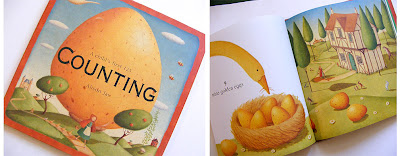
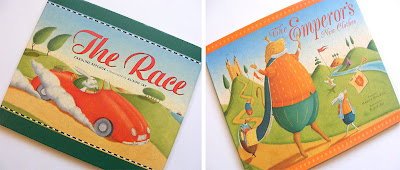
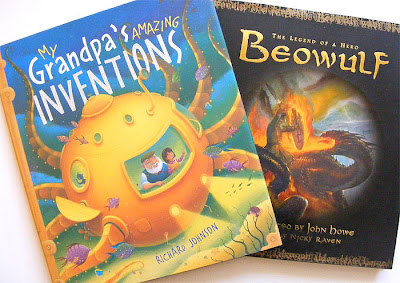
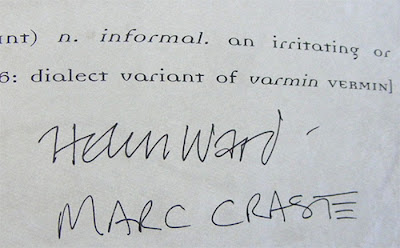
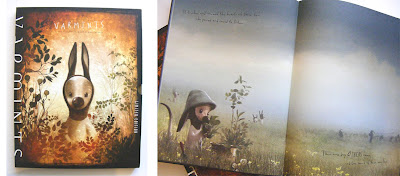
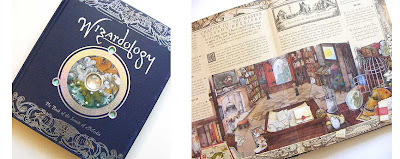
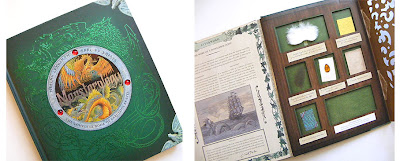
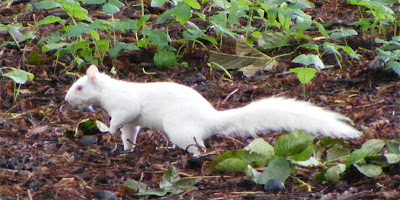
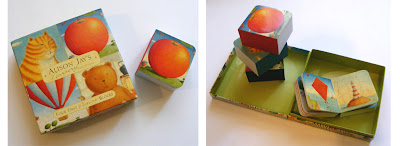
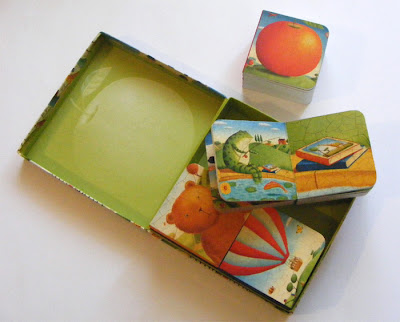
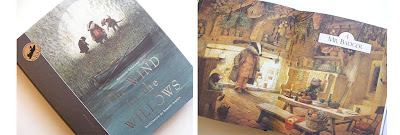




Gorgeous work, Lyn! I loved seeing your process, and I’m not even an illustrator.
Wow. That is just lovely artwork. Interesting interview. Thanks!
Love, love, love Lyn’s work! She’s inspiring me to pick up my watercolors again. I’ll be on the look-out for the Agatha Christie books with her illustrations. :)
Lyn, Thank you for sharing about your process. Your artwork and illustrations are just lovely!
Loved Lyn’s work (especially the dog with the dog yoga book!).
Sensational artwork, Lynn. Love the pink dragon and the mice. :-)